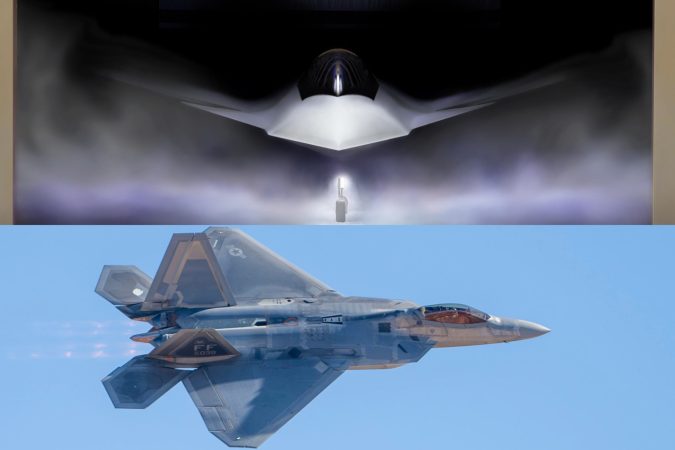
The Game-Changing F-47: America’s Next-Gen Fighter Jet
Alright, folks, big news in the world of military aviation—the U.S. Air Force has officially unveiled its next-generation fighter jet, the F-47. This aircraft, part of the highly classified Next-Generation Air Dominance (NGAD) program, is set to replace the legendary F-22 Raptor. And let me tell you, this is not just an upgrade—it’s a complete game-changer.
So, what makes the F-47 special? Well, according to Air Force Chief of Staff Gen. David Allvin, the F-47 is the world’s first fully crewed sixth-generation fighter. That’s a direct challenge to China, which has been showcasing its own stealthy aircraft. But the F-47 isn’t just about stealth—it’s about superior range, adaptability, and cutting-edge technology designed to dominate future battlefields.
Now, let’s talk design. The artist renderings we’ve seen reveal some fascinating features—stealthy contours, a bubble canopy, and, interestingly, canards and uniquely angled wings, which are pretty uncommon in previous stealth designs. These elements suggest enhanced maneuverability and aerodynamic efficiency. Plus, Allvin confirmed that the F-47 will have a significantly longer range than the F-22, which already stretches over 1,850 miles with external tanks. That means this jet is built to handle the vast distances of the Pacific theater while still being versatile enough for operations in Europe.
One of the biggest shifts with the F-47 is its modularity. Unlike older jets, this aircraft is designed to adapt over time with an open-systems architecture, allowing easy upgrades in software, sensors, and mission equipment. And get this—it will require less maintenance, meaning fewer headaches for ground crews and higher availability rates compared to the F-22 and F-35. The stealth technology used on the F-47 is reportedly more durable and sustainable, making it a true "daily flyer."
Also Read:- Boxing Legend George Foreman Passes Away at 76 – A Legacy of Strength and Faith
- Bernie Collins Highlights the Key Challenge for Female F1 Drivers
Let’s not forget about cost. While exact figures remain classified, Allvin emphasized that the F-47 will be more affordable than its predecessors. The F-22 program was cut short due to high costs, but the Air Force is determined not to repeat that mistake. Reports suggest an expected fleet size of around 220 to 250 aircraft, ensuring that the U.S. maintains a dominant air presence worldwide.
And here’s where things get even more interesting—this fighter will be integrated with autonomous drone wingmen, or Collaborative Combat Aircraft (CCAs). Imagine an F-47 leading a swarm of AI-powered drones, executing missions with precision and efficiency. This takes aerial warfare to an entirely new level, blending manned and unmanned capabilities in a way we’ve never seen before.
The contract for developing the F-47 was awarded to Boeing, beating out Lockheed Martin. This is a huge win for Boeing, which has faced challenges in recent years, but now has the opportunity to prove itself on one of the most advanced fighter projects in history.
Looking ahead, testing and evaluation will ramp up in the coming years, with the goal of having the F-47 operational within President Trump’s current administration, which lasts until January 2029. If successful, this aircraft will define the future of air combat for decades to come.
So, what does this all mean? Simply put, the F-47 isn’t just another fighter jet—it’s a statement. A statement that the U.S. remains at the forefront of air superiority, ready to counter any adversary. As Gen. Allvin put it, "When they look up, they will see nothing but the certain defeat that awaits those who dare to challenge us."
Stay tuned, because this is just the beginning of what could be the most revolutionary fighter jet program in modern history.
Read More:


0 Comments